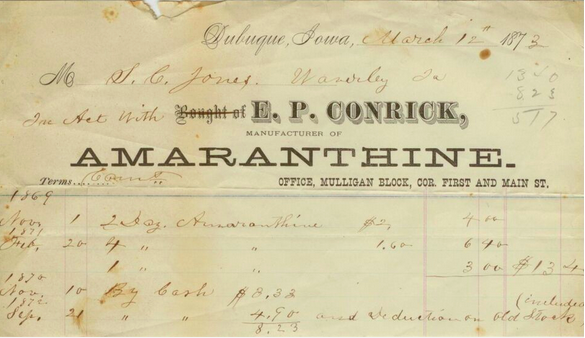Encyclopedia Dubuque
"Encyclopedia Dubuque is the online authority for all things Dubuque, written by the people who know the city best.”
Marshall Cohen—researcher and producer, CNN
Affiliated with the Local History Network of the State Historical Society of Iowa, and the Iowa Museum Association.
AMARANTHINE
AMARANTHINE. With a history of use in South America dating back over 4,500 years, the plant has many health applications. In the United States, the amaranth crop is used primarily for seed production. Most amaranth in American food products starts as a ground flour, blended with wheat or other flours to create cereals, crackers, cookies, bread or other baked products. Despite studies showing that amaranth can be blended with other flours at levels above 50% without affecting functional properties or taste, most commercial products use amaranth only as a minor portion of their ingredients despite them being marketed as "amaranth" products. Its oil has healthy properties and the plant is used as an ornamental or the source of a dye.
It has been suggested as an inexpensive native crop that could be cultivated by indigenous people in rural areas for several reasons:
1) A small amount of seed plants a large area (seeding rate 1 kg/ha).
2) Yields are high compared to the seeding rate: 1,000 kg or more per hectare.
3) It is easily harvested and easily processed, post harvest, as there are no hulls to remove.
4) Its seeds are a source of protein.
5) It has rich content of the dietary minerals, calcium, magnesium, phosphorus, and potassium.
6) In cooked and edible forms, amaranth retains adequate content of several dietary minerals.
7) It is easy to cook. Boil in water with twice the amount of water as grain by volume (or 2.4 times
as much water by weight). Amaranth seed can also be popped one tablespoon at a time in a hot pan
without oil, shaken every few seconds to avoid burning.
8) It grows fast and, in three cultivated species, the large seedheads can weigh up to 1 kg and contain
a half-million small seeds. (1)
---
Source:
"Amaranthine" Wikipedia, https://en.wikipedia.org/wiki/Amaranth


